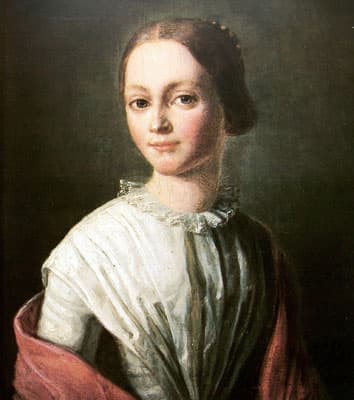The viola d’amore (or viol of love) is a violin with a difference. Instead of the usual 4 strings as on the violin, it can have up to 14 strings – seven bowed and seven that are ‘sympathetic’ strings, i.e., they resonate but are not bowed.
This viola d’amore by Johannes Florentus Guidantus comes from the 18th century and we can see immediately the unusual profile of the instrument, the use of flame holes rather than the violin’s f holes, and the extra strings.
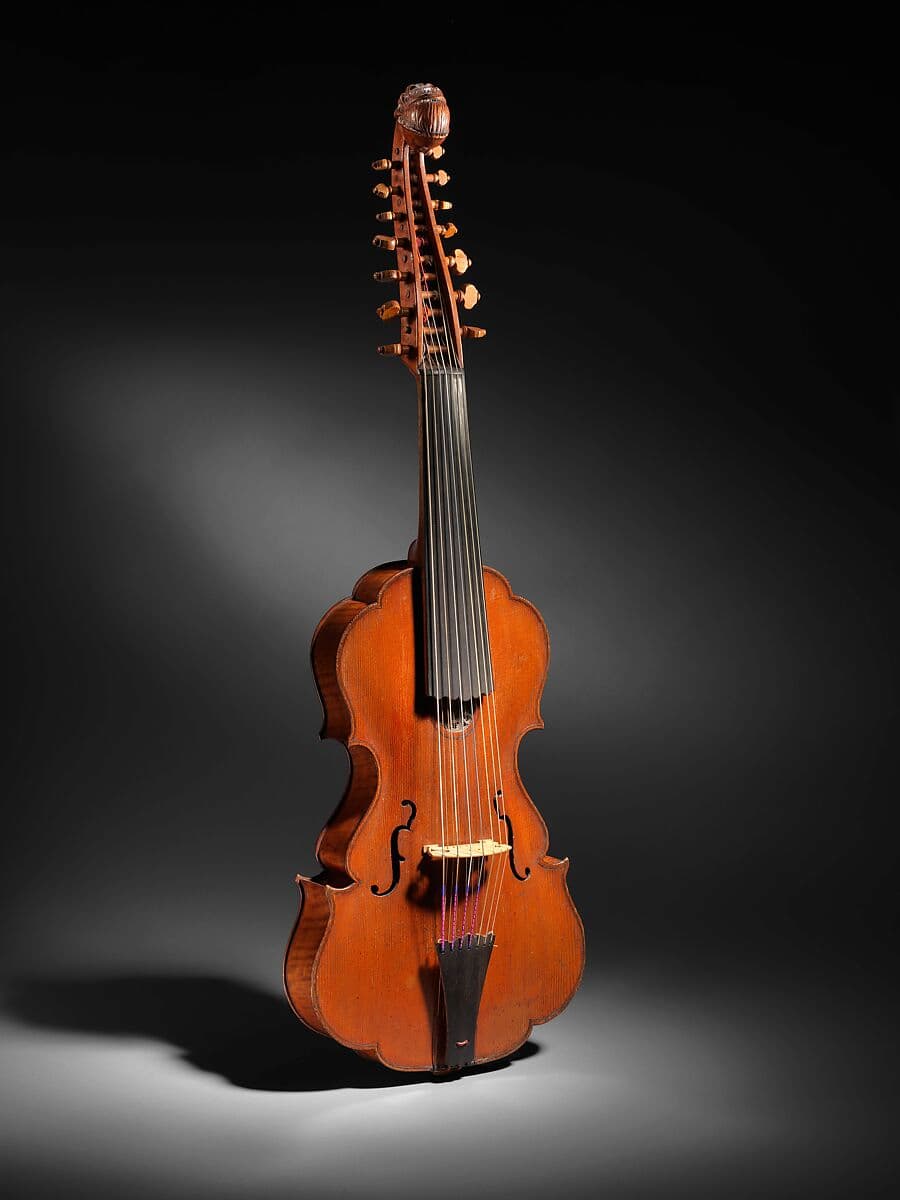
Guidantus: Viola d’amore (New York: Met Museum)
The seven playing strings run across the top of the bridge and the sympathetic strings run through the bridge and under the fingerboard. In the side view of the Guidantus instrument, we can see how the two sets of strings run.
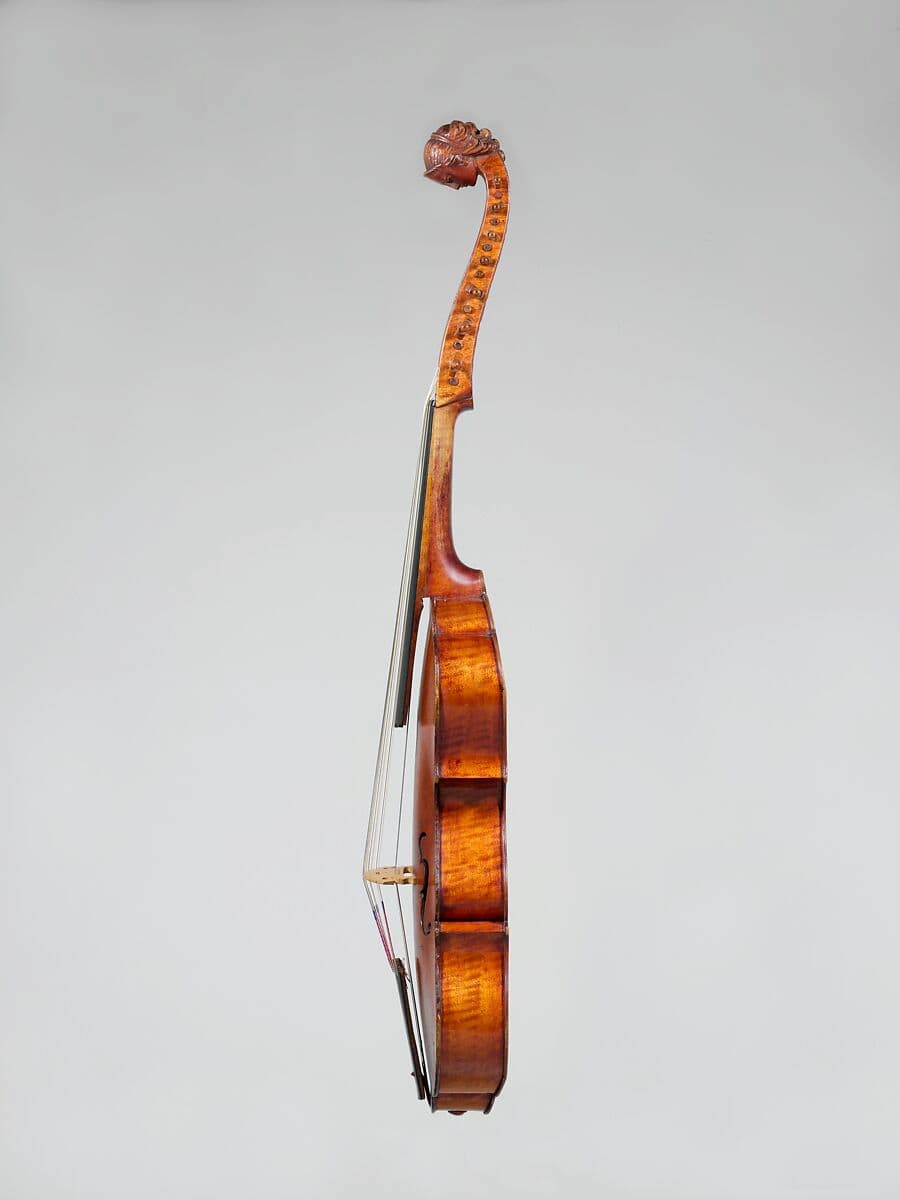
Guidantus: Viola d’amore – side view (New York: Met Museum)
In keeping with the designs used in viols, the top of the pegbox is not a simple scroll but is usually a head.

Guidantus: Viola d’amore – head (New York: Met Museum)

Vignali: viola d’amore with blindfolded head, 1911 (Venice: Museo della musica)

J.U. Eberle: Viola d’amore with head, 1740 (Jonathan Hill collection)
The shape of the instrument could vary as well. This viola d’amore from Germany combines several instruments in one. The body is from a German bowed zither with the neck and pegbox of an older viola d’amore. The top of the pegbox is a lion-head. The instrument was made around 1900.

German viola d’amore with lion head, ca 1900 (New York: Met Museum)
This viola d’amore from 1701, made by Giovanni Grancino, also has an unusual shape but the standard violin scroll at the top.
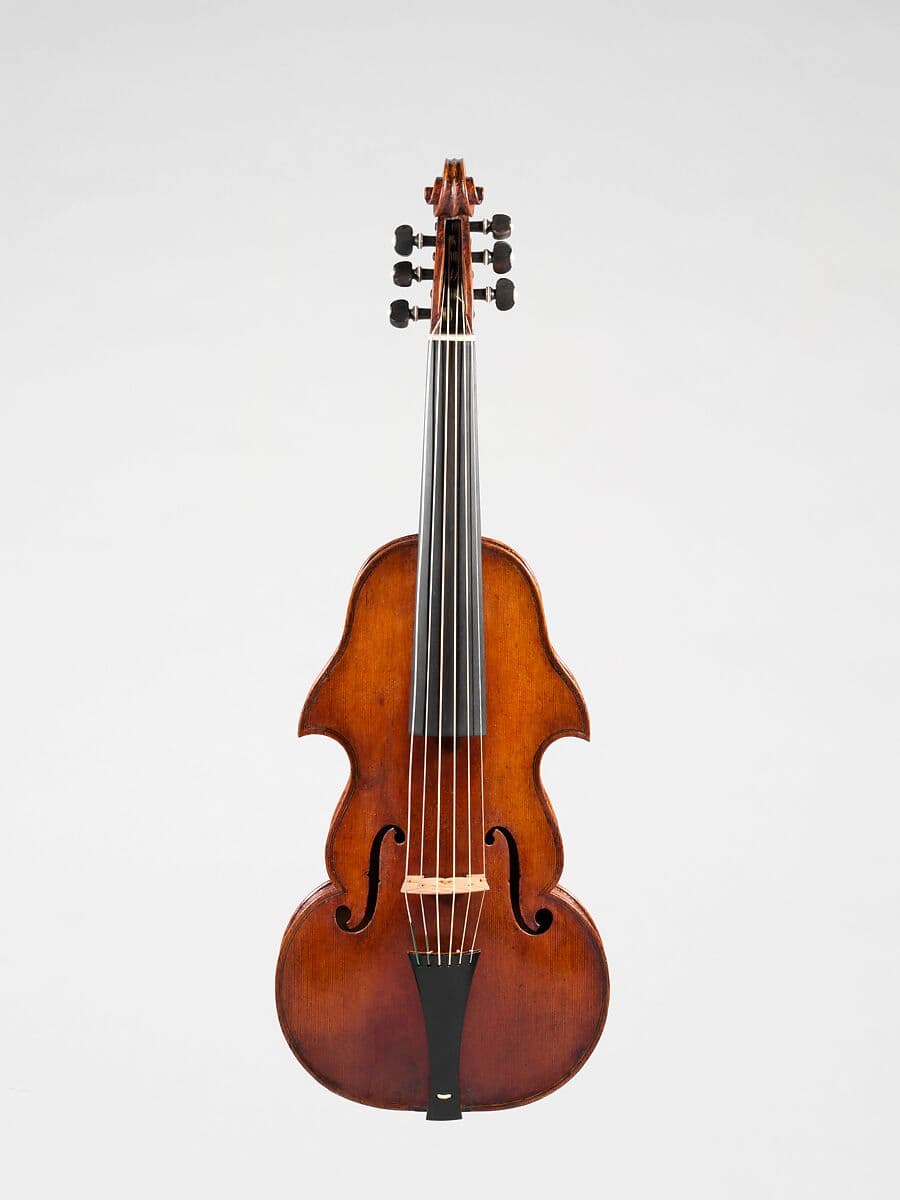
Grancino: viola d’amore, 1701 (New York: Met Museum)
These unusual instruments were not unique in having sympathetic strings. Other European instruments, usually in the folk tradition, had these, including the Swedish nyckelharpa and the Norwegian hardanger fiddle. In India, the sitar is the principal instrument with sympathetic strings.
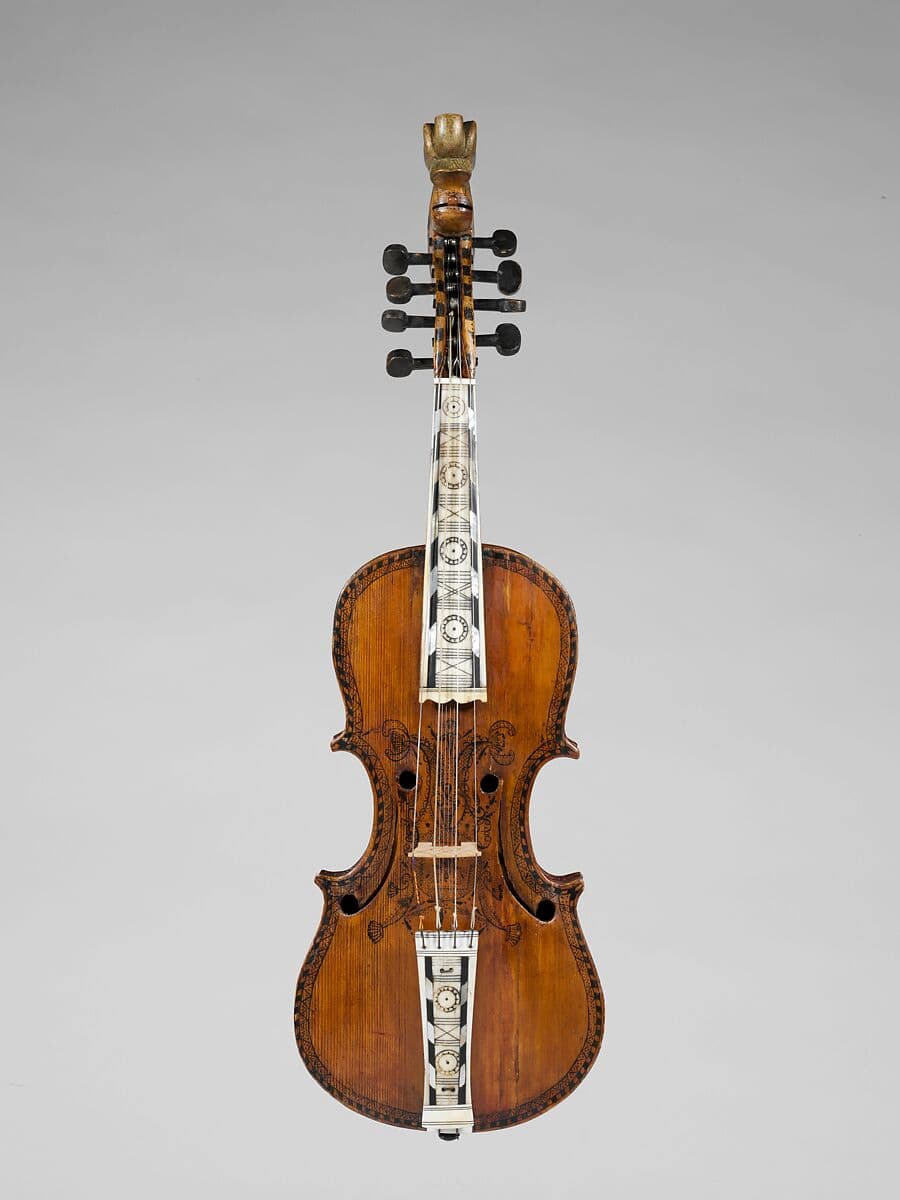
Norwegian Hardanger Fiddle, 1786 (New York: Met Museum)
What was the point of the extra strings? They have a clear sound that’s frequently described as having a ‘silvery’ tone, and they resonate longer than the regular bowed strings, since they remain untouched. Composers including J. S. Bach, Vivaldi, Telemann, Haydn, and Locatelli all wrote for the instrument.
In this recording of music by the otherwise unknown late–18th century composer Robert Gaswind, you can hear the echo effect in the viola d’amore’s playing in the bright backdrop to the main melodic line.
Robert Ganswind: Viola d’amore Concerto in D Major – I. Tempo moderato (Dorothea Jappe, viola d’amore; Capella Clementina; Helmut Müller-Brühl, cond.)
It’s an unusual sound and other composers, as mentioned above, adopted the instrument.
As expected, Vivaldi wrote a concerto for the viola d’amore.
Antonio Vivaldi: Viola d’amore Concerto in D Minor, RV 394 – III. Allegro (Adrian Chandler, viola d’amore; La Serenissima; Adrian Chandler, cond.)
One in the modern day was Paul Hindemith, who wrote for the viola d’amore and piano in his Kleine Sonata, Op. 25, no. 2. Hindemith was a violist and discovered the viola d’amore in 1922, writing to a friend ‘I have a new sport, I play viola d’amour, a quite marvellous instrument which has been quite lost and for which there is only very little literature. The most beautiful sound you can imagine; indescribably sweet and soft. It is tricky to play, but I play it with enthusiasm and all listeners enjoy it’.
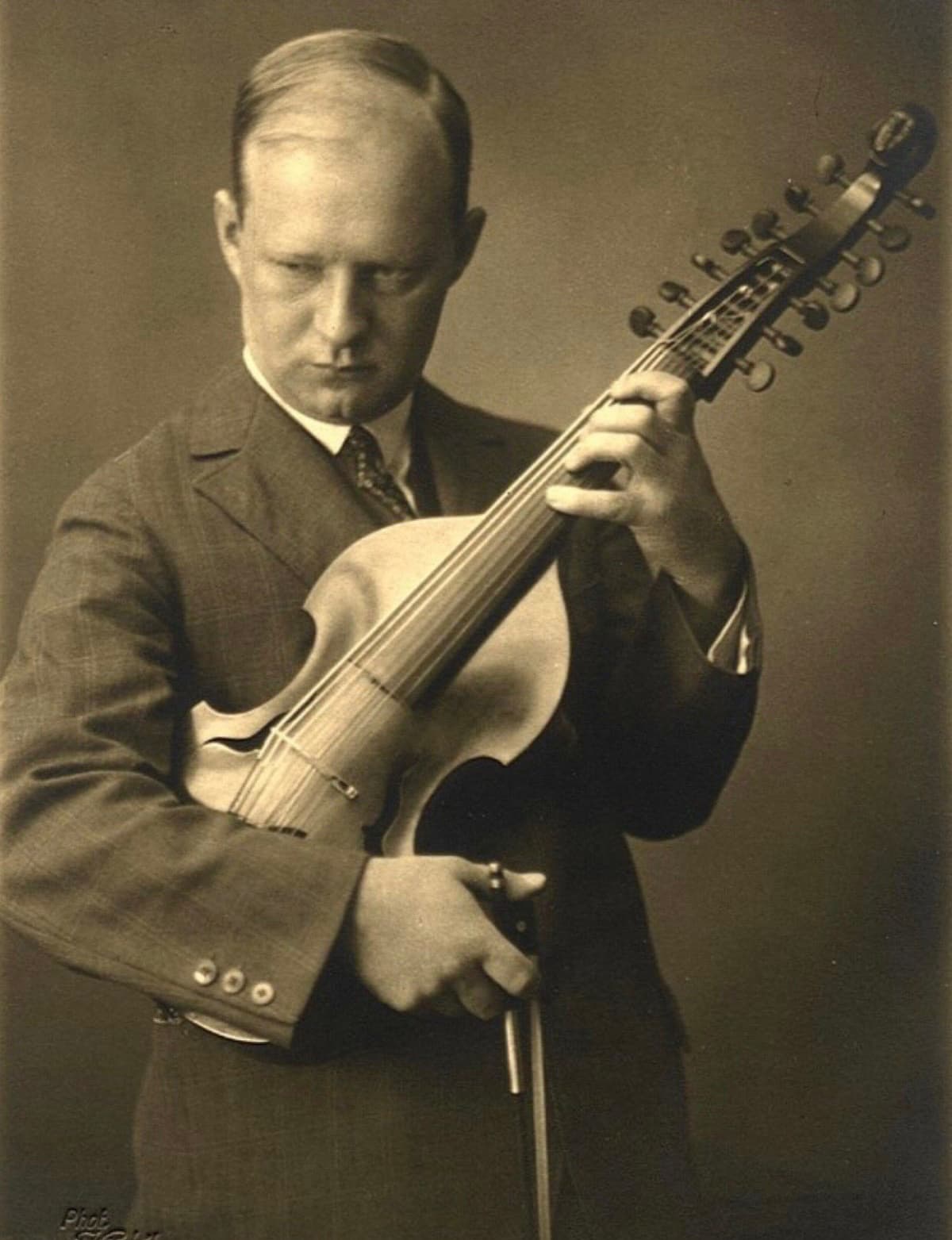
Hindemith and his viola d’amore
Paul Hindemith: Kleine Sonata, Op. 25, No. 2 – II. Sehr langsam (Gunter Teuffel, viola d’amore; Anthony Spiri, piano)
Danish composer Poul Rovsing Olsen (1922–1982) also picked up on the viola d’amore but combined its ‘gentle, ingratiating sound’ with his own research in Oriental music. As a work for solo viola d’amore, the piece gives us the opportunity to appreciate all that the viola d’amore can do: its rich resonance, the silvery upper sound and the warm lower sound, all while being a violin-like instrument.
Poul Rovsing Olsen: Pour une viole d’amour, Op. 66 (Anette Slaatto, viola d’amore)
It’s an unusual sound that seems to take us further into the world of strings than a violin or even a viola can do. The resonating sound of the sympathetic strings makes it sound like it’s in a mirror world, echoing back again and again.
For more of the best in classical music, sign up for our E-Newsletter


